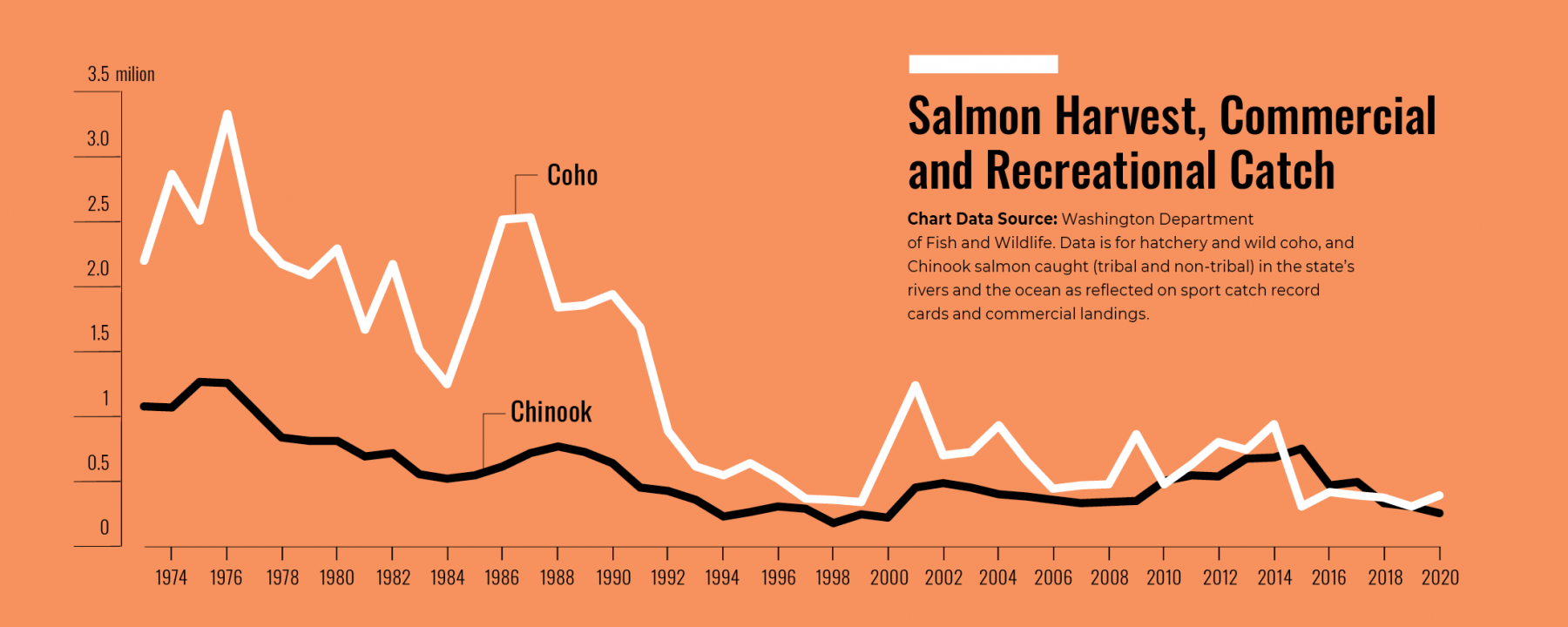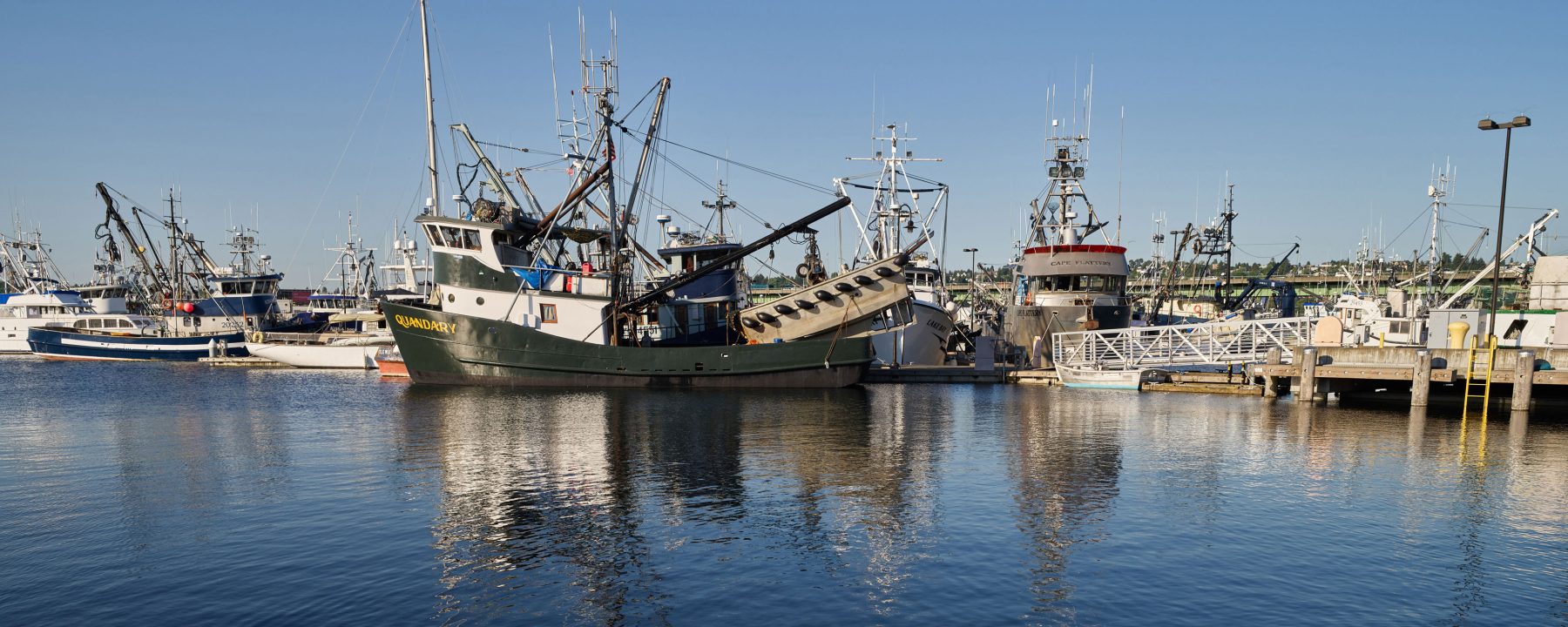Harvest
“Harvest” is the term used for salmon caught by people for food. Salmon harvest in many parts of Washington peaked in the late 1800s. Many salmon populations, which also were harmed by destruction of their habitat and dam construction, were pushed to local extinction. The federal government identified overfishing as one of the main reasons for listing salmon and steelhead populations as threatened or endangered under the Endangered Species Act in the 1990s.
Current fishing is co-managed by tribes and state and federal agencies through treaties, agreements, congressionally established management councils, and compacts. Harvest is highly coordinated and closely managed to protect threatened and endangered salmon. Even so, as salmon numbers continue to drop in many populations, managers are struggling to make sure that enough salmon, especially Chinook, are available for harvest and other needs, like food for Southern Resident orcas.
PRESSURE: Overharvest
![]() “Overharvest” means harvesting so many adult fish that they are not able to lay enough eggs to keep future generations stable. In general, harvest of Endangered Species Act-listed salmon in Washington has declined. However, listed salmon risk being overharvested in the ocean, where they mingle with different species and populations and are indistinguishable from unlisted fish.
“Overharvest” means harvesting so many adult fish that they are not able to lay enough eggs to keep future generations stable. In general, harvest of Endangered Species Act-listed salmon in Washington has declined. However, listed salmon risk being overharvested in the ocean, where they mingle with different species and populations and are indistinguishable from unlisted fish.
Salmon Fishing Has Decreased

PRIORITIES AND PROGRESS
![]() To encourage harvest of hatchery fish, salmon managers use mark-selective fishing for some species and areas. Managers mark hatchery salmon by removing the adipose fin, a small flap of tissue near the tail, leaving a healed scar in its place. Anglers can then harvest marked fish but return wild fish back to the ocean or river. The process of catching and identifying if a fish is marked or not, still can harm the fish returned to the water. Despite the risk to wild fish, mark-selective fishing remains the most widely used method to allow fishing while protecting listed populations.
To encourage harvest of hatchery fish, salmon managers use mark-selective fishing for some species and areas. Managers mark hatchery salmon by removing the adipose fin, a small flap of tissue near the tail, leaving a healed scar in its place. Anglers can then harvest marked fish but return wild fish back to the ocean or river. The process of catching and identifying if a fish is marked or not, still can harm the fish returned to the water. Despite the risk to wild fish, mark-selective fishing remains the most widely used method to allow fishing while protecting listed populations.
In combination with mark-selective fishing opportunities, managers carefully schedule fishing seasons to avoid impacts to fish populations that are not abundant enough to harvest. These scheduled opportunities often are shortened or lengthened to ensure that quotas are allocated fairly and without damaging non-target fish populations.
Harvest is highly coordinated and closely managed to protect threatened and endangered salmon.

Photograph of fishing boats was taken at the Fishermen’s Terminal in Seattle by Kenneth John Gill AKA GillFoto
